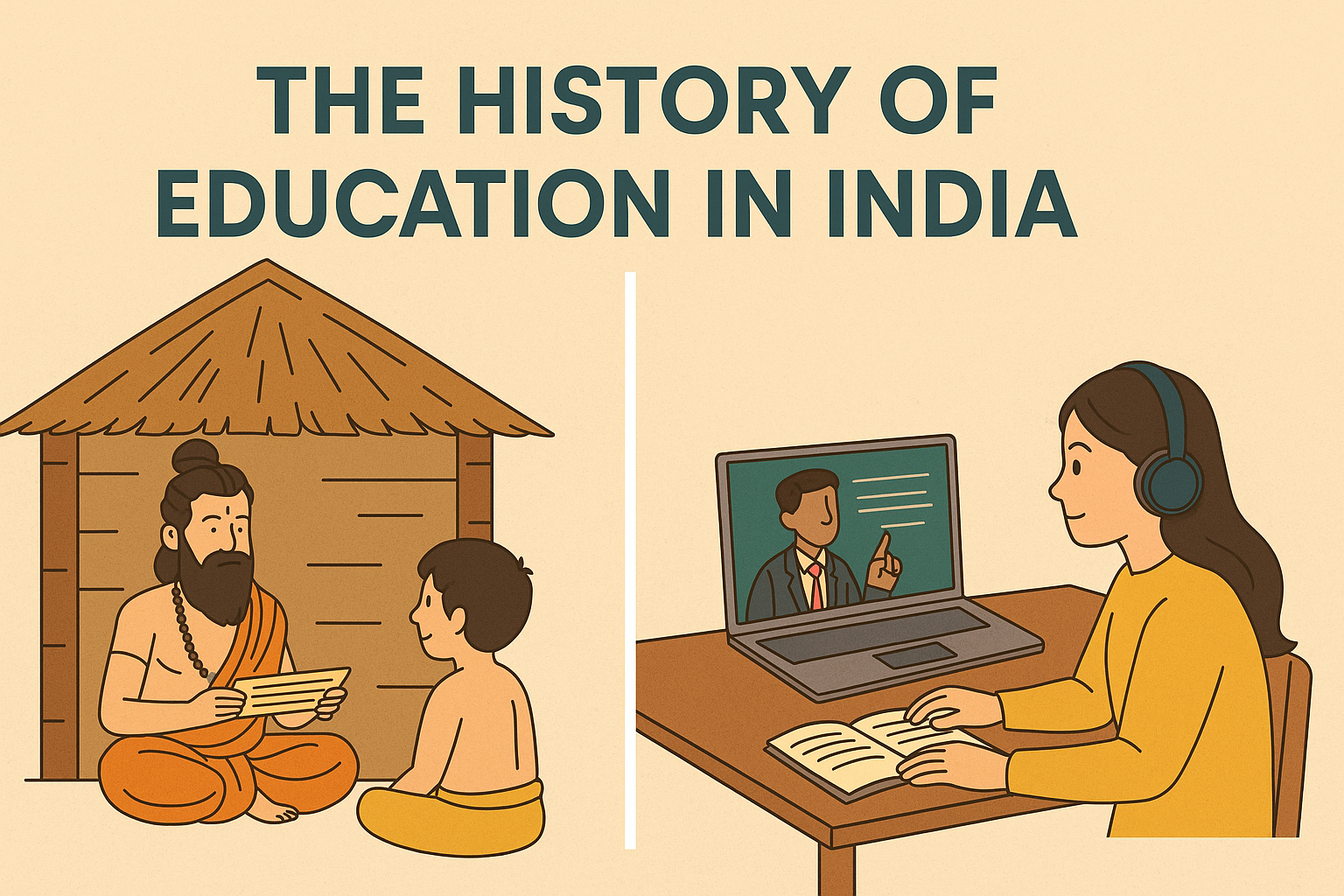The History of Education in India
India has a rich and diverse educational heritage that evolved over centuries. Let’s explore it period-wise:
1. Ancient India (Before 6th Century CE) – The Gurukul System
- 🧘♂️ Education was spiritual & holistic: Emphasis on Vedas, Upanishads, Ayurveda, astronomy, and mathematics.
- 🏡 Gurukuls were residential schools where students lived with teachers (gurus).
- 📚 Oral learning: Students memorized scriptures.
- 🔄 Free education: No fees, learning was a sacred duty.
2. Buddhist Period (6th Century BCE – 12th Century CE)
- 🌏 Rise of universities: Nalanda, Takshashila, Vikramshila became global centers of learning.
- ☮️ Buddhist philosophy: Focus on logic, debate, and spiritual development.
- ✍️ Subjects: Grammar, philosophy, medicine, and fine arts.
- 👫 Open to all: More inclusive than earlier Vedic system.
3. Medieval India (13th – 18th Century) – Islamic Rule
- 📖 Maktabs and Madrasas: Islamic schools taught Arabic, Persian, theology, and law.
- 🏰 Court patronage: Rulers like Akbar supported scholars and translations of texts.
- ⚖️ Science & Math: Arabic numerals and astronomy got a boost.
- 🔒 Limited access: Education often reserved for elite Muslim boys.
4. British Period (18th – 1947)
- 🛑 Decline of traditional learning: British ignored Gurukul and Madrasah systems.
- 📚 Macaulay’s Minute (1835): English education introduced, focus on Western knowledge.
- 🎓 Establishment of schools & colleges: Bombay, Calcutta, and Madras Universities founded in 1857.
- 🧑🏫 Teacher training and exams: Formal system with subjects like science, history, and civics.
- 🚫 Excluded masses: Only elite had access; education for women was minimal.
Post-Independence India (1947 – Present)
1. Early Independence Period (1947–1980s)
- 📜 Article 45: Free and compulsory education for children (6–14 years).
- 🏫 Expansion of schools & colleges: Focus on literacy, adult education.
- 👩🏫 Education for girls improved.
- ⚙️ Technical Institutes: IITs, IIMs, and AIIMS established.
2. Modern Era (1990s – Present)
- 💻 Digital learning: Online education, smart classrooms, and IT integration.
- 🪪 Right to Education (RTE) Act 2009: Made education a fundamental right.
- 🌐 NEP 2020: New Education Policy introduced flexible, skill-based learning.
- 📈 Focus on inclusivity: Schemes for girls, SC/ST, and rural areas.
Conclusion
India’s education journey is a tale of evolution — from Gurukuls to Google Classrooms.
Every era contributed uniquely to shaping a diverse and dynamic system of learning.
